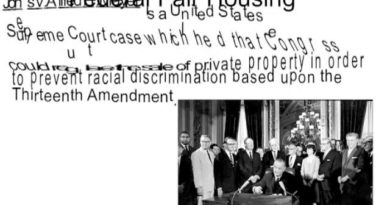What is a Ponzi Scheme?
Our specialist commercial litigating team is increasingly consulted in disputes that bear the hallmarks of collective investments schemes and Ponzi schemes. This is particularly true when, for example, property investors, are asked to invest in schemes that offer ‘guaranteed rental’. When we examine the scheme more closely, it becomes clear that new investor funds are being requested to repay older investor money. It can also be a case of professional negligence if solicitors or other professionals fail to identify or advise on such high-risk transactions. We will be happy to assist you if you feel you may be in a similar situation. Contact our commercial litigation team for more information. We have and are acting in these disputes across the country including with millions and tens of millions in dispute and acting for tens of investors who have been wronged.
Ponzi schemes have captured public attention for decades, and it’s vital to recognise their characteristics to avoid falling victim to them. These fraudulent operations often begin with enticing promises of high returns and low risk, drawing in investors unaware of the lurking dangers.
Although they seem like legitimate opportunities, they are scams which leave victims desperately trying to recover their losses. This article will explain the history of pyramid schemes, their warning signs, and how they differ from other financial frauds. Contact Helix Law for more information.
A Short History of the Ponzi Scheme.
Why is it called a Ponzi Scheme.
The phrase “Ponzi Scheme” was first used in the 1920s by an Italian named Charles Ponzi. He moved to the US, where he launched an investment strategy which promised investors a return of 50% within 90 days if they purchased postal reply coupons. The authorities investigated his business and found it fraudulent. While this wasn’t the only Ponzi scheme, it was well-known because of its size, with reports that investors collectively lost around $20 million.
Examples Of Ponzi Schemes
Bernie Madoff
One notable case was orchestrated Bernie Madoff. A financier, he encouraged victims to invest into blue-chip stocks by promising lucrative returns. His reputation as a former Nasdaq chairman meant that investors trusted him with large sums of cash.
Mr Madoff used the money of new investors to pay out returns to older investors. The operation collapsed in 2008, during the financial crisis, when many investors sought to withdraw their investment. He defrauded his victims of approximately $65 million.
Allen Stanford
Mr Stanford, a Texas resident, created a Ponzi Scheme through an offshore account in Antigua. He sold certificates of deposit that promised high returns. In the same way as in other cases, Mr Stanford used money from new investors to pay off old investors and fund his luxurious lifestyle. Total investment was around $7 billion. The US Securities and Exchange Commission conducted an investigation in 2009 and the court sentenced him for 110 years in prison. How to Spot Ponzi Scheme Red Flags:
High Returns with Little Risk
One telltale is a promise for high rewards with minimal risk. Investments fluctuate with the markets, and no one, however experienced, is able to guarantee a specific outcome. Beware of overassurance and unrealistic promises.
Unclear or Complex Investment Strategies
Fraudsters often hide behind a seemingly complicated investment strategy to hoodwink their victims. An investment manager must be able explain how the strategy works and what the risks are.
High-Pressure to Buy
Schemers may use high-pressure sales tactics to rush victims into investing. These tactics may include giving investors an unrealistic deadline for signing up or convincing them they don’t need independent financial advice.
Difficulty Withdrawing Funds
Investments should be readily available to withdraw if and when an individual chooses to. If withdrawal requests are delayed or come with conditions, it could be a Ponzi scheme. In a Pyramid Scheme, people make money by recruiting participants rather than selling legitimate products or service. The fraudster will use the fee that each new participant pays to pay out existing members. They collapse when the number of new members slows or stops. Most participants lose all their money.
Examples of Pyramid Schemes
Fortune High-Tech Marketing
Fortune High-Tech Marketing (FHTM) was a company founded in 2001 that recruited representatives to sell various products and services and earn a commission. The company was shut down by the Federal Trade Commission in 2013 after a settlement that required FHTM repay nearly $8,000,000 to those affected. However, the company neither admitted nor denied that its business model was fraudulent.
Herbalife
Herbalife still exists as a multi-level marketing company specialising in selling dietary supplements. In 2016, the company agreed to pay $200,000,000 to settle allegations that it was a scam. The model relied upon recruiting distributors who would buy Herbalife’s products and bring on new members. The company has since restructured their business model to focus more on actual product sales.
The Main Differences Between Ponzi and Pyramid Schemes
While both schemes pay returns to earlier investors with money from newer participants, key differences exist:
The fraudster claims to manage an investment with legitimate returns in a Ponzi scheme, while a pyramid scheme relies on recruitment.
Ponzi schemes often appear to have an individual or organisation in control, while pyramid schemes rely on a network of participants recruiting others.
Pyramid schemes are often disguised as multi-level marketing ventures, whereas Ponzi schemes masquerade as investment opportunities.
Frequently Asked Questions
How Does a Ponzi Make Money?
A Ponzi scheme relies on new investor funds to pay out returns to earlier investors. It does not rely on revenue from selling products or service, so it usually collapses when new investments stop or die down. Is it Illegal to Run a Ponzi scheme?
Yes. Ponzi schemes in the UK are illegal. They are a form investment fraud. Fraudsters lie about how they use the victims’ money and promise a false return. The penalties range from disqualification of directors to imprisonment and large fines.
Final Thoughts
Ponzi schemes have a history of defrauding investors by promising high returns with minimal risk while relying on a constant influx of new investors to pay off earlier ones. Over time, Ponzi schemes collapse, leaving the majority of participants with significant financial loss. The Bernie Madoff and Allen Stanford fraud cases demonstrate the devastating impact that these fraudulent activities can cause on individuals and institutions.
Understanding the warning signs, such as unrealistic returns and unclear investment strategies, is crucial to avoid falling victim. Pyramid schemes, on the other hand, rely more on recruitment than investment. Both types of financial fraud have serious legal consequences. Suspecting that you are involved in one of them can be a frightening experience. If a solicitor is instructed and fails to review or advise when the transaction is being contemplated, or is proceeding, then it will be professional negligence. These are usually good claims to pursue, as professionals are insured. If you believe you have been a victim of financial fraud, misrepresentation or property investment, or need legal assistance in cases where ‘guaranteed return’ has not materialised, please contact our commercial litigation team today at Helix Law for expert advice. We would love to assist you.






